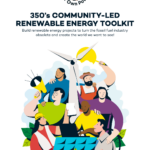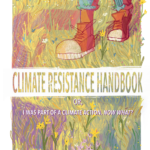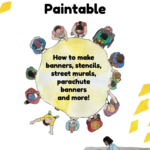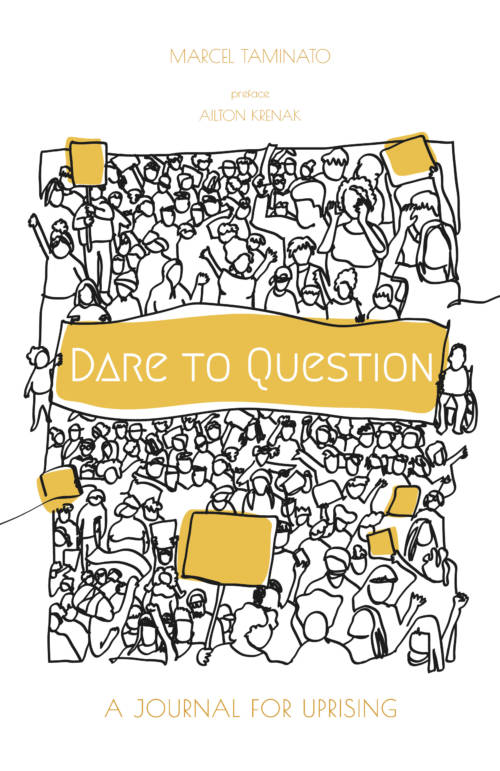What helps groups create momentum? Here are a few lessons from around the world.
1. Connect with widely-held social values
Two organisers in Amman, Jordan, Omar and Hiba, started a local climate change group called We Get Together: we are all entitled public transport (معاً نصل – النقل العام حقنا جميعاً). After attending 350’s Global PowerShift, they committed to building a local campaign to address climate change.
The problem is that talking about climate change is not common in Jordan. Few reporters talk about it—and there’s not a long history of environmental movement-building.
So Omar and Hiba looked for a way that could connect to the issues that were most important to people. They saw that the lack of public transportation infrastructure gives poorer Jordanians no option but to purchase private cars. This in turn causes massive air pollution and is one of the biggest contributors to greenhouse gas emissions.
In talking about the issue, they picked widely-shared values. Instead of basing the campaign only around their value of climate change, they brought new people into the campaign based on other people’s values, too. The campaign was about climate change—but they got people involved based on the social problems surrounding the lack of public transportation: health impacts and economic injustice.
After talking with bus riders and partner organisations, they are running a successful citywide campaign to change the government’s investment in public transportation—and build growing energy around the issue of climate change.
What are widely-held social values that are being violated by current policy? What are some values that you have not used that can also be tied to your issue? How can your movement grow to embrace the best of widely-held social values?
2. Plan at least two actions ahead of time
Sometimes we can focus on organising a single big action to our own detriment. If the action is successful, when people are done with the action they ask, “So what’s next?” But too often we don’t have a concrete answer.
In Brazil, 350 organiser Nicole Oliveira was working in a large coalition to stop exploitation by fracking companies. They organised big action plans on 7 October, when the government planned to sell off lands rights (including indigenous lands) to fracking companies.
Yet they knew it was not enough to just plan one action. If so, then the government would could just wait until their action was over.
So they planned ahead with multiple actions: a month before the action a 20,000+ person marathon/bike ride/walk on International Day without a Car. Soon after they organised a march with people from traditional African religions. And then a week before the action an international solidarity day for people. All this creates momentum leading up to the big action.
This is key: Once we’re done with one action, we organise people into the second. When the first action is over, we have something else to carry people forward. That creates a feeling of momentum.
And it’s not limited to just before the major land rights sale. They have plans afterwards, too. Whether they were to win or lose, they prepared people that the movement will continue by having post-7 October events organised.
It takes some boldness to create a future schedule of events. It shows confidence in our organising capacity—even if we put it on a calendar when the action isn’t totally known. How could you create a whole schedule of events, or even just plan for at least two actions in a row?
3. Use suspense in actions
The above example raises another way to create momentum, which is the use of suspense.
Sometimes our campaigns naturally have dates that create suspense. But when those aren’t in our campaign (or even when they are), we can take a powerful attitude and create our own actions that involve suspense.
These can be really powerful, escalated actions. Climate change organisers in and around Germany decided to use suspense in their plan to shut-down the largest coal diggers in the world (the Bagger 288). They openly made their intention known, putting on their website, “From the 14th to the 16th of August, we, together with hundreds of people, will stop the mines in the lignite mining area near Cologne in an action of Civil Disobedience.”
Their plan was straightforward, though logistically challenging: to bring hundreds of people to physically shut-down the diggers. To help add to the momentum they planned multiple actions ahead of time, including getting people to sign a “declaration of intent” to engage in civil disobedience, and coordinating with allies like the Degrowth Summer school, who joined forces to build a diverse climate camp: a place to get together, get to know each other, build trust in the movement and learn what we can do to prevent climate chaos.
What would happen? That’s what allies, the media, and the public wanted to know. The boldness enticed people. It created interest, curiosity, and momentum.
In the end, nearly 1,500 people took part in the daring act of civil disobedience and shut down Europe’s biggest source of CO2 emissions—shutting down production in the Rhineland mine (https://350.org/ende-gelande-wrap-up/).
There are lots of ways of creating suspense of varying risks: 350 New Zealand has joined with a campaign to release the secretive negotiating texts of the Trans-Pacific Partnership Agreement (TPPA). They announced their intention to peaceably and nonviolently carry out a democratic “search and seizure” on government offices to release the texts. Others have used contests or raffles—which is another version of suspense.
What are other actions that have created suspense—not just for the actors, but enough that it attracted other allies? Creating these actions may involve boldness and creativity—what are ways your group gets creative and experiments with new kinds of actions? What might you try that would involve suspense?
4. Plan actions at others’ attention-getting events
Canadian organiser Cam Fenton describes their political context, “With a collapsed price of oil, a summer of historic wildfires and a media that finally seems be ready to talk about climate change, we have a perfect recipe for climate to be front and centre during the upcoming Canadian election. Yet, while emissions and temperatures are rising, the ambition of Canada’s political parties isn’t.”
Their goal was to push the media and public conversation further. They could have orchestrated their own actions and events—and maybe a handful of sympathetic media would cover the events and connect the issue of climate change to the election. But with most elected leaders and media unwilling to fully address climate change, 350 Canada picked a different strategy: go to where the attention already was.
Their strategy: following candidates to their public events and interrupt them to talk about climate change. (This tactic is often called bird-dogging, which works by pressuring the same target with the same message wherever they go.) They didn’t have to recruit the media or an audience from the public—that was already there. Instead, they “simply” did the hard work of finding out the politicians’ public schedules and then sneaking in.
The tactic worked, like when Conservative Prime Minister Stephen Harper was hounded by activists who managed to get into one of his public events. Local climate activists and supportive unions organised a support rally outside. Inside, two people snuck in and held up signs “Vote for Climate Justice.” They were immediately physically removed, but pictures of them went viral and even sparked twitter responses from party leaders. (More at: https://350.org/crashing-harpers-campaign/)
One of the organisers of the action, Aurore Fauret, explains the concept, “It’s about creating momentum by showing the breadth of dissent.” This largely worked because rather than relying on their own ability to recruit media attention, they were showing up where media already were.
Broadly, this concept of going where events are already getting attention has been done in less confrontational ways, too, such as convincing high-profile singers to include a message about climate change in their concert or getting organisers of a march bike ride to include action messages on climate change.
What are some upcoming social, cultural, or political events where there is already attention? Are there some of them that you can connect with—either by taking them over, or playing a supportive role? How can this help us build new relationships and energy?
5. Offer people specific responsibilities to stay involved
Few things can stop momentum as quickly as not offering people something concrete to do next. It can lose potential new members and leaders, but also without direction it can lead to feelings of despair, burn-out, or hopelessness.
We need to think about how to support the quality of the relationships and invite others to take greater responsibility for the work. For example, find a time to meet one to one, find out what their strengths are and why they were drawn to the last action. Together, envision what they can bring to your work to make the team stronger: can they present at an upcoming community event or religious community, or be paired with a current member to convene the next art-making session? (See How to Build a Base Using One-on-Ones and Increase your Volunteers’ Involvement: Using the Ladder of Engagement.)
South Africa organiser Ferrial describes how just sitting down with people is the beginning of a process: “We are trying activism in areas that are not well-organised. Many of the people we work with are not that interested in politics, and so we have to ease into organising. We often start very casually. Like, ‘we’re hosting a coffee, please come.’ From that, you kind of ease into talking about climate change issues and ask if they want to join a core team. If they’ve taken the hook chances are they want to be involved. But then work with them to develop a group and start off with very small campaigns.
“Each step, the asks grow: have coffee, join the core team, and then run an initial campaign. At each stage we offer different specific steps they can take to stay involved—not only actions but also tasks to step into leadership, recruit other people, help with the database—anything that keeps people connected.”
How are you helping people step into more leadership? How are you meeting people where they are—and then how do you help learn about their interests and skills so you can give them clear things to do?



